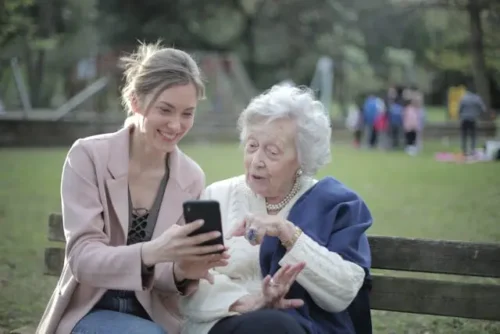
The Role of Technology in Enhancing Care Homes Services
In today’s rapidly advancing world, technology has infiltrated almost every aspect of our lives, and the realm of healthcare is no exception. Among its myriad applications, technology has brought about significant transformations in the provision of care homes services. From improving efficiency in administrative tasks to enhancing the quality of care for residents, the integration of technology has revolutionized the way care homes operate.
Streamlining Administrative Tasks
One of the primary challenges faced by care homes is the burden of administrative tasks. Managing resident records, scheduling appointments, and handling billing processes can be time-consuming and susceptible to to errors. However, these tasks have become significantly more streamlined with the increase of electronic health records (EHRs) and specialized software solutions, such as management systems tailored for care homes.
EHRs allow for the digitization of patient records, enabling quick access to vital information such as medical history, medication schedules, and treatment plans. This not only improves the efficiency of healthcare providers but also ensures that accurate and up-to-date information is readily available, facilitating better decision-making and continuity of care.
Moreover, management software designed specifically for care homes can automate various administrative processes, including staff scheduling, inventory management, and billing. By reducing the time and effort required for these tasks, care home staff can focus more on delivering quality care to residents, thereby enhancing overall service delivery.
Enhancing Resident Care
Beyond administrative tasks, technology plays a crucial role in improving the quality of care provided to residents. One significant way in which technology achieves this is through remote monitoring and telemedicine. Eastleigh Care Homes in Chittlehampton exemplifies the potential for technological integration to enhance care services and resident well-being.
Remote monitoring devices, like wearable sensors and smart home technology, enable care homes to keep track of residents’ vital signs, activity levels, and sleep patterns in real-time. This constant monitoring allows for early detection of health issues or changes in condition, facilitating timely interventions and preventing adverse outcomes. Additionally, smart home technology can assist residents with daily tasks and promote independence while ensuring their safety and security.
Telemedicine platforms further extend the reach of healthcare services by enabling virtual consultations between residents and healthcare professionals. This is particularly beneficial for residents with mobility issues or those living in remote areas where access to specialized care may be limited. Through telemedicine, residents can receive timely medical advice, follow-up care, and even certain treatments without the need for physical travel, thus improving convenience and reducing healthcare disparities.
Fostering Social Engagement and Well-being
Loneliness and social isolation are common issues faced by many residents in care homes, which can have detrimental effects on their overall well-being. However, technology offers various solutions to address these issues and promote social engagement among residents.
Social media platforms and communication apps enable residents to stay connected with their families and friends, regardless of physical distance. Video calls, instant messaging, and social networking can help alleviate feelings of isolation and facilitate meaningful connections with loved ones.
Furthermore, technology can support recreational activities and cognitive stimulation within care home settings. Virtual reality (VR) experiences, interactive games, and digital storytelling platforms offer opportunities for residents to engage in enjoyable and mentally stimulating activities, promoting cognitive function and emotional well-being.
Overcoming Challenges and Ensuring Accessibility
While the integration of technology holds immense potential for enhancing care home services, it is essential to acknowledge and address potential challenges, including digital literacy barriers, privacy concerns, and disparities in access to technology.
Care home staff and residents may need training and assistance to effectively utilize technology solutions, especially older adults who might be less familiar with digital tools. Furthermore, robust security measures are imperative to safeguard sensitive health information and uphold residents’ privacy rights.
Moreover, efforts should be made to ensure equitable access to technology across all care home settings, regardless of geographical location or socioeconomic status. This may involve providing subsidies for technology adoption, investing in infrastructure development, and promoting digital inclusion initiatives targeted at marginalized communities.
Embracing Innovations for Future Growth
As technology advances swiftly, care homes need to stay flexible and receptive to embracing new innovations that could enhance services and elevate resident outcomes. Several emerging technologies show promise for the future of care home services, including artificial intelligence (AI), robotics, and Internet of Things (IoT) devices.
AI-driven algorithms can sift through extensive healthcare data, recognize patterns, foresee health outcomes, and tailor treatment plans for each resident. This proactive and personalized approach to care delivery has the potential to substantially enhance health outcomes and elevate the quality of life for residents.
Robotics, including robotic assistants and exoskeletons, have the potential to assist care home staff with tasks such as lifting and transferring residents, thereby reducing the risk of injuries and musculoskeletal strains. Additionally, social robots equipped with interactive capabilities can provide companionship and cognitive stimulation to residents, contributing to their overall well-being.
IoT devices, such as smart sensors and ambient monitoring systems, can gather real-time data on environmental factors, resident activity levels, and safety hazards within care home facilities. By leveraging this data, care homes can proactively address potential risks, optimize resource allocation, and create a safer and more supportive living environment for residents.
Ethical Considerations and Human-Centered Design
As care homes integrate technological progress, it’s paramount to uphold a human-centered approach, placing utmost importance on the dignity, autonomy, and well-being of residents. Ethical considerations should steer the development and implementation of technology solutions, ensuring they honor residents’ rights, preferences, and cultural nuances.
Furthermore, involving care home staff in the design and deployment of these solutions is crucial to ensure alignment with the unique needs and workflows of care home settings. Empowering staff through training and fostering collaboration can cultivate a culture of innovation and ongoing improvement, ultimately elevating the standard of care delivered to residents.
Collaboration and Knowledge Sharing
To fully harness the potential of technology in enhancing care home services, collaboration, and knowledge sharing among stakeholders are crucial. This includes partnerships between care homes, technology developers, healthcare providers, researchers, and policymakers to exchange insights, best practices, and lessons learned.
By fostering a collaborative ecosystem, stakeholders can leverage each other’s expertise and resources to accelerate innovation, address common challenges, and drive positive outcomes for care home residents. This may involve initiatives such as pilot projects, research studies, and policy advocacy efforts aimed at promoting the adoption and effective use of technology in care home settings.
Read More: Family Matters: Engaging Relatives in the Care Home Journey
Conclusion
The role of technology in enhancing care home services is multifaceted, encompassing administrative efficiency, resident care, social engagement, and future innovation. By embracing technology solutions such as EHRs, remote monitoring devices, telemedicine platforms, and emerging innovations like AI and robotics, care homes can optimize service delivery, improve resident outcomes, and foster a culture of innovation and collaboration.
However, the successful integration of technology into care home settings requires careful consideration of ethical principles, human-centered design, and collaboration among stakeholders. By prioritizing the dignity, autonomy, and well-being of residents, while harnessing the transformative power of technology, care homes can continue to evolve and adapt to meet the evolving needs of aging populations in the digital age. Together, we can build a future where technology enhances care home services, enriches the lives of residents, and ensures that everyone receives the support and dignity they deserve in their later years.



